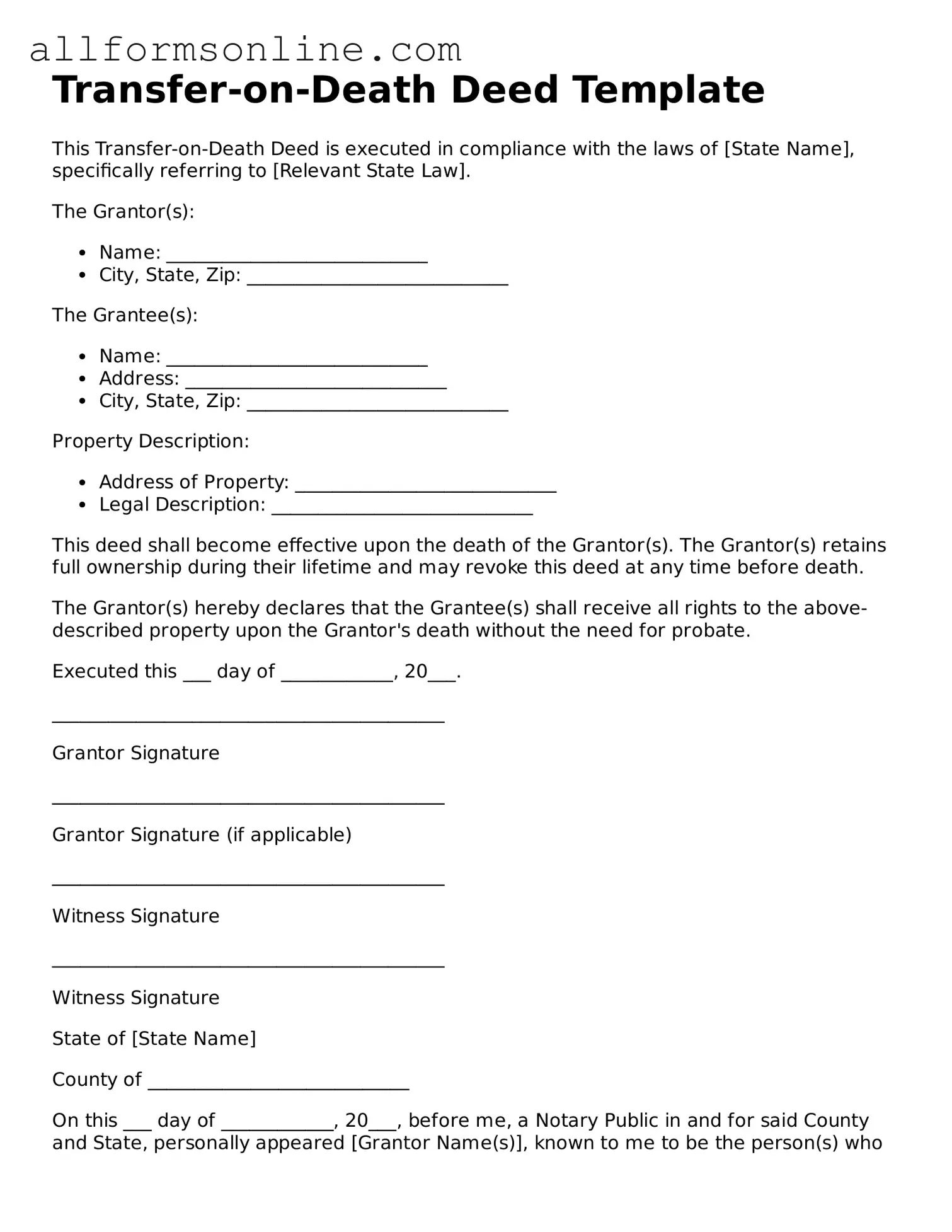What is a Transfer-on-Death Deed?
A Transfer-on-Death Deed (TOD Deed) is a legal document that allows an individual to transfer real estate property to a designated beneficiary upon the individual's death. This deed provides a way to avoid probate, simplifying the transfer process for heirs.
Who can create a Transfer-on-Death Deed?
Any property owner who is legally competent can create a Transfer-on-Death Deed. This includes individuals who hold title to real estate and wish to designate a beneficiary to receive the property after their death.
What types of property can be transferred using a Transfer-on-Death Deed?
Typically, a Transfer-on-Death Deed can be used for residential real estate, such as single-family homes, condominiums, and vacant land. However, it cannot be used for personal property like vehicles or bank accounts.
How does a Transfer-on-Death Deed work?
The property owner fills out the Transfer-on-Death Deed form, naming one or more beneficiaries. After the owner's death, the property automatically transfers to the beneficiaries without going through probate, as long as the deed was properly executed and recorded.
Do I need to notify the beneficiary about the Transfer-on-Death Deed?
While it is not legally required to inform the beneficiary, it is advisable to do so. Informing the beneficiary can help avoid confusion or disputes after the owner's death, ensuring that the intended recipient is aware of the arrangement.
Can I revoke a Transfer-on-Death Deed?
Yes, a Transfer-on-Death Deed can be revoked. The property owner must execute a new deed that explicitly revokes the previous one, or they can record a formal revocation document. It is important to follow the appropriate legal procedures to ensure the revocation is valid.
Are there any limitations to using a Transfer-on-Death Deed?
Yes, there are some limitations. A Transfer-on-Death Deed does not apply to all types of property and may not be recognized in all states. Additionally, if the property owner has outstanding debts or liens, creditors may still have claims against the property after the owner's death.
What happens if the beneficiary predeceases the property owner?
If the designated beneficiary dies before the property owner, the transfer may become void unless the deed includes an alternate beneficiary. It is essential to consider this possibility and name contingent beneficiaries to ensure the property is transferred as intended.
Is legal assistance recommended when creating a Transfer-on-Death Deed?
While it is possible to create a Transfer-on-Death Deed without legal assistance, consulting an attorney is recommended. An attorney can provide guidance on the specific requirements of your state and help ensure that the deed is properly executed and recorded.
